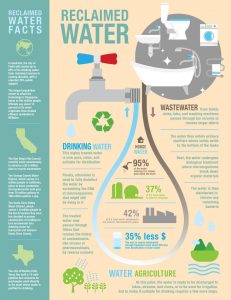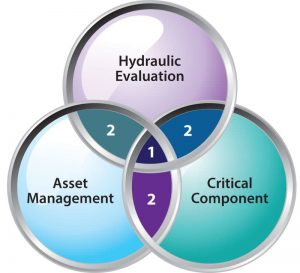10 Best Low Impact Development Stormwater Practices
Stormwater runoff is the number one source of water pollution in the country, and a major threat to clean water in many New England communities. Over the years, we have paved, constructed, and developed the land to the point that the natural landscape is decimated. Where snow, sleet, and rain would normally land on forests and grass and be filtered by layers of dirt and rock, it now washes off parking lots, roads, driveways, rooftops, and other hard surfaces, known as impervious cover, and picks up pollutants such as oil, trash, sediment, bacteria, fertilizer, oil, and road salt along the way. This heavily polluted, untreated water then makes its way into streets and storm drains and subsequently into rivers and lakes that supply our drinking water.
In Texas and Oklahoma this week, we’ve seen the devastating and deadly effects of stormwater runoff. Because the absorbent grasses and dirt have been mostly covered over by pavement and buildings, heavy rains now run off streets, roofs, and driveways, overwhelming drainage systems and, in extreme weather, flooding homes. And in New England, stormwater runoff has not only contributed to water pollution and flash flooding, but also to beach closures, algae blooms, and soil erosion.
What is Low Impact Development?
Low Impact Development (LID), also known as green infrastructure, is a stormwater management approach that maintains natural hydrology during site development. LID minimizes impervious surfaces and utilizes existing natural site features along with conservational controls to manage stormwater. In LID, stormwater is viewed as a resource rather than a waste product, and the site is developed with this key concept in mind. Often, LID replaces traditional stormwater management practices that focus on moving stormwater off-site with curbs, pipes, and ditches.
LID is useful for creating functional, attractive, and environmentally friendly residential, commercial, and industrial sites, and is both sustainable and cost-effective. Some of the benefits include improved water and air quality, reduced stormwater runoff volume, increased natural habitat and recreational space, increased property values, improved groundwater recharge, and community beautification. Below we have compiled a list of ten LID stormwater practices that are most effective in managing stormwater in New England.
1. Rain Gardens
A rain garden is typically situated close to the source of runoff and utilizes plants that are able to withstand extremes of moisture as well as excessive nutrients such as nitrogen and phosphorus. By slowing stormwater as it travels downhill, rain gardens provide opportunity for stormwater to infiltrate and also inhibit erosion. While rain gardens provide habitat for wildlife and are an attractive landscaping addition, it’s what’s beneath them that makes them an LID rain garden. Plants and soils are specifically chosen and engineered to clean stormwater by reducing nutrients and overall sediment loads. Multiple rain gardens are often spread over an area, cumulatively controlling the volume and improving the quality of stormwater runoff.
2. Green Roofs
A green roof, also knows as a rooftop garden, is exactly what its name suggests: a roof with vegetation on it. Through evapotranspiration, green roofs remove heat from the surface of the roof and in turn the surrounding air. A green roof is easily installed on any type of building, residential or commercial, and can be as simple as a single layer of groundcover or as intricate as Fenway Park’s extensive vegetable garden. In addition to providing excellent stormwater management and improving water quality, green roofs also provide such benefits as reduced energy use and air pollution, and improved comfort and quality of life.
3. Permeable Pavement
The link between high levels of impervious surfaces and degraded water quality is indisputable, and most impervious surfaces are paved roadways. Reducing impervious surfaces is one of the key steps in improving any community’s water quality. Permeable, or pervious, pavement is designed to allow water to pass through it into the ground below where it is naturally filtered. Pervious pavement has a myriad of benefits including not only reduced stormwater runoff and replenished groundwater, but also reduction of flooding, pollutants, temperature, roadway ice buildup, and traffic hydroplaning accidents. In New England, special care needs to be taken when utilizing permeable pavement, as there is potential to compromise its effectiveness through plowing and sanding.
4. Grassed Swales
A grassed swale is an open channel designed to manage a specific water quality volume, often along roadsides and parking lots. Stormwater runoff is slowed by vegetation as it flows in these channels, allowing the stormwater to infiltrate and be filtered by the underlying soil. Grassed swales are long and shallow in shape and have plants that are both flood and erosion resistant.
5. Disconnected Impervious Surface (DIS)
DIS is a low-cost, effective way of reducing the volume and flow of stormwater runoff by directing stormwater runoff from impervious areas to graded and vegetated pervious surfaces. DIS is effective for both roofs and paved areas utilizing slightly different designs and provides both infiltration and filtration.
6. Bioretention Basins
Bioretention basins are landscaped depressions specifically designed to slow and treat on-site stormwater runoff. Typically utilized in parking lots and residential areas, these basins incorporate pollutant removal systems that naturally operate in forests. During a storm event, runoff pools above the mulch and is slowly filtered through the soil beneath before being collected by a perforated underdrain. The clean, filtered runoff is then returned to the storm drain system or local receiving waters.
7. Alternative Street Design
Alternative street design is mainly effective for new construction and takes into account all aspects of “green streets.” When building a new street, all existing hydrologic functions of the land need to be considered and incorporated in the best possible way into the design. This includes preserving wetlands, buffers, and highly permeable soils while minimizing impervious areas. Typically streets are more narrowly constructed with wide, pervious sidewalks and plenty of vegetated areas.
8. Bioretention Curb Extensions (Stormwater Bumpout)
A stormwater bumpout is a curb extension that extends the existing curb. Typically located either mid-block or at an intersection and composed of a layer of stone that is topped with flood and nutrient tolerant plants and soil, these attractive bumpouts filter stormwater while providing an aesthetic benefit to communities. The bumpout is constructed with an inlet (or curb-cut) that directs stormwater runoff into the bumpout where it can be infiltrated and filtered. The vegetation in a stormwater bumpout is short enough so as not to impact driver sight-lines.
9. Stormwater Planters and Tree Boxes
Stormwater planters and tree boxes are installed in sidewalks and are designed to manage stormwater runoff from streets and sidewalks. Planters are typically sunken into the sidewalk, rectangular in shape with concrete sides, and lined with a permeable fabric. They are then filled with stone or gravel and topped with soil, hardy plants, and trees. Because they are built down into the sidewalk, runoff is directed into these planters that provide storage, infiltration, and evapotranspiration.
10. Rain Barrel/Cistern
A rain barrel collects and stores stormwater runoff from rooftops, where it can later be used to water lawns and gardens. To be effective, they must be emptied between storms and utilized by a high percentage of a community’s population. While one rain barrel holds a relatively small amount of water, a large volume of rain barrels can be extremely effective in significantly reducing the amount of stormwater entering a community’s sewer system during storms.





































